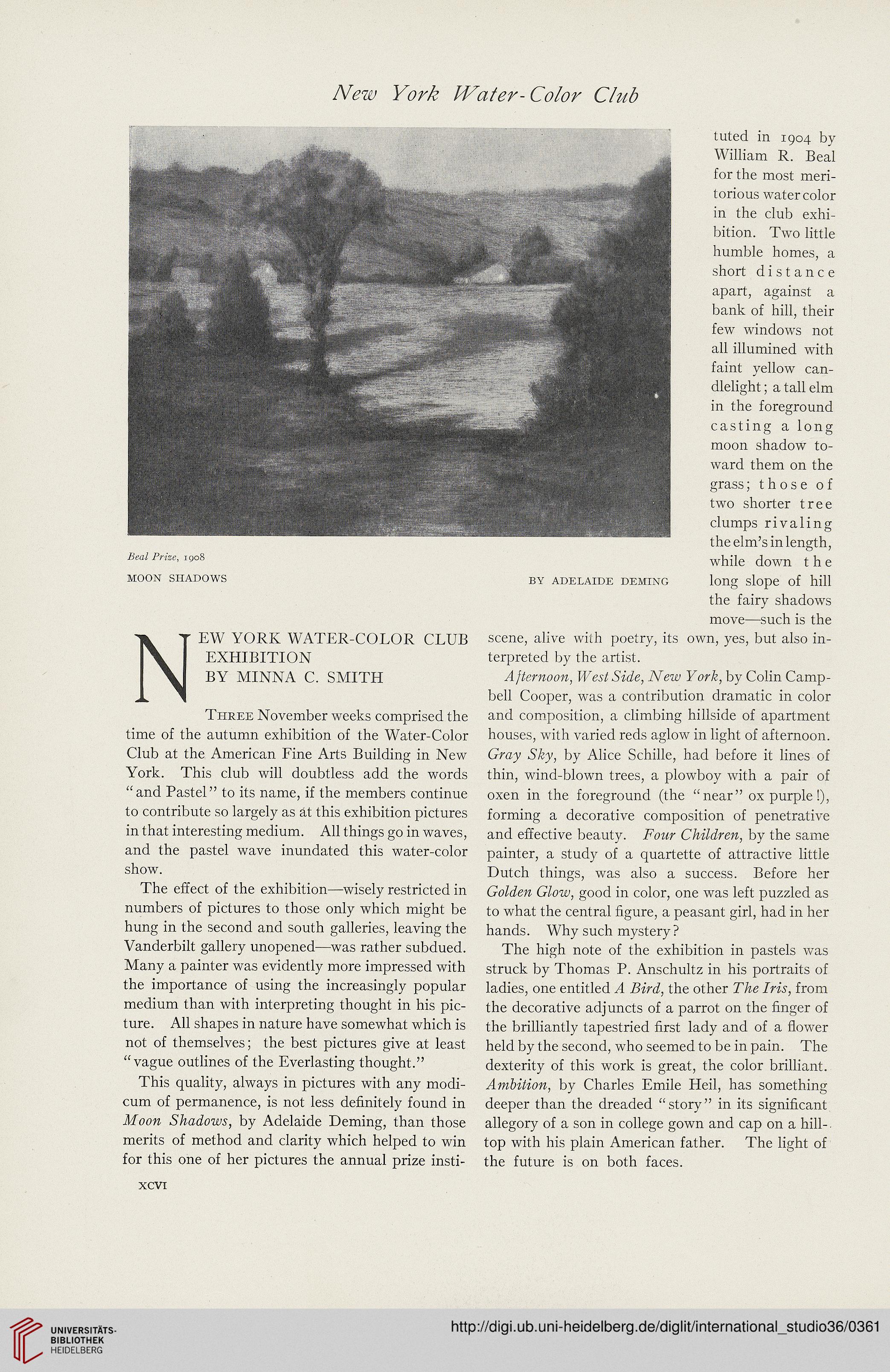MOON SHADOWS BY ADELAIDE DEMING
T EW YORK WATER-COLOR CLUB
EXHIBITION
BY MINNA C. SMITH
TnREE November weeks comprised the
time of the a.utumn exhibition of the Water-Color
Ciub at the American Fine Arts Buiiding in New
York. This club will doubtless add the words
" and Pastei" to its name, if the members continue
to contribute so largely as at this exhibition pictures
in that interesting medium. Ail things go in waves,
and the pastel wave inundated this water-color
show.
The effect of the exhibition—wisely restricted in
numbers of pictures to those oniy which might be
hung in the second and south gaiieries, ieaving the
Vanderbilt gaiiery unopened—was rather subdued.
Many a painter was evidently more impressed with
the importance of using the increasingly popuiar
medium than with interpreting thought in his pic-
ture. All shapes in nature have somewhat which is
not of themseives; the best pictures give at least
"vague outiines of the Everiasting thought."
This quality, always in pictures with any modi-
cum of permanence, is not iess definiteiy found in
Afcow by Adelaide Deming, than those
merits of method and ciarity which heiped to win
for this one of her pictures the annuai prize insti-
tuted in 1904 by
Wiiiiam R. Beai
for the most meri-
torious watercoior
in the ciub exhi-
bition. Two littie
humbie homes, a
short d i s t a n c e
apart, against a
bank of hili, their
few window^s not
ali iliumined with
faint yeiiow can-
dielight; a tali eim
in the foreground
casting a long
moon shadow to-
ward them on the
grass; t h o s e o f
two shorter tree
ciumps rivaiing
theeim'siniength,
whiie down t h e
iong slope of hili
the fairy shadows
move—such is the
scene, aiive with poetry, its own, yes, but also in-
terpreted by the artist.
A/icrwooM, IFeV ATw For&, by Colin Camp-
beil Cooper, was a contribution dramatic in color
and composition, a ciimbing hiliside of apartment
houses, with varied reds aglow in iight of afternoon.
Gmy ALy, by Alice Schilie, had before it lines of
thin, wind-biown trees, a plowboy with a pair of
oxen in the foreground (the "near" oxpurple!),
forming a decorative composition of penetrative
and effective beauty. FoMr CMifreM, by the same
painter, a study of a quartette of attractive little
Dutch things, was aiso a success. Before her
GoMew Giow, good in color, one was left puzzled as
to what the centrai hgure, a peasant giri, had in her
hands. Whysuchmystery?
The high note of the exhibition in pastels was
struck by Thomas P. Anschultz in his portraits of
ladies, one entitied H the other TAe Zw, from
the decorative adjuncts of a parrot on the hnger of
the briliiantiy tapestried first iady and of a dower
held by the second, who seemed to be in pain. The
dexterity of this work is great, the coior briiliant.
by Charles Emiie Heii, has something
deeper than the dreaded " story" in its signihcant
allegory of a son in college gown and cap on a hill-
top with his plain American father. The light of
the future is on both faces.
xcvt





